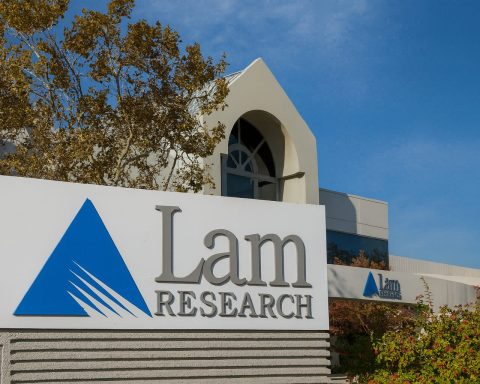NuScale Power Corp. (NYSE: SMR) — one of the market’s favorite “AI + nuclear” stories earlier this year — is back under pressure today, November 25, 2025, as traders reassess valuation, dilution risk, and the long road to commercial deployment of its small modular reactors.
SMR stock price today: heavy selling into the close
As of late-afternoon trading on Tuesday, SMR shares were changing hands around $18.4–$18.5, down roughly 7–8% on the day. That’s a sharp drop from Monday’s close near $19.94, with about 15 million shares traded — close to the stock’s already-elevated average volume. [1]
Over a longer lens, the damage is even more striking:
- November slide: SMR is down around 55% for the month, according to Benzinga’s rundown of advanced nuclear names. [2]
- From peak to present: The stock hit a 52‑week high of $57.42 in mid‑October and now trades about 68% below that level. [3]
- Volatility & short interest: With a beta above 2 and roughly 22% of the free float sold short, SMR remains one of the market’s higher‑octane nuclear plays. [4]
In other words, today’s selloff is part of a broader unwinding of a spectacular run that had pushed NuScale into “story stock” territory for AI‑driven power demand.
Why SMR is dropping on November 25, 2025
1. UBS cuts its price target nearly in half
The most concrete catalyst today: UBS cut its 12‑month price target on SMR from $38 to $20, while maintaining a Neutral rating. [5]
UBS joins a growing list of banks that have turned more cautious in recent weeks:
- RBC Capital: Sector Perform, target trimmed to $32 from $35. [6]
- Citigroup: Downgraded to Sell in October, cutting its target from $46 to $37.50. [7]
- Bank of America: Downgraded NuScale to Underperform, citing valuation concerns after the stock’s huge AI‑fueled rally. [8]
UBS’s new $20 target now sits only slightly above today’s price, undermining the earlier “multi‑bagger” narrative that was anchored to targets in the $45–$55 range.
2. A sector‑wide “nuclear meltdown” in November
NuScale’s drop isn’t happening in isolation. A Benzinga piece this morning highlighted a “nuclear stock meltdown” across advanced reactor names:
- NuScale (SMR) approximate November decline: ~55%
- Oklo (OKLO): ~39%
- Nano Nuclear Energy (NNE): ~37% [9]
The article points to three main drivers behind the month‑long rout:
- These companies are pre‑revenue or early‑revenue, with valuations based heavily on long‑dated expectations.
- Commercial deployment is years away, so cash burn and capital needs remain significant.
- A broader pullback in speculative AI‑related trades has cooled interest in “picks‑and‑shovels” plays like advanced nuclear power. [10]
Given NuScale’s huge run earlier this year and its rich multiples, the stock has been particularly exposed to any sentiment shift.
3. Dilution and overhang worries are front and center
Investors are also digesting several capital‑structure moves that collectively raise dilution and overhang concerns:
- US$750 million at‑the‑market (ATM) equity program
- On November 7, NuScale filed an 8‑K and sales agreement enabling it to sell up to $750 million of Class A common stock “at the market” through a syndicate of banks. [11]
- Big jump in authorized shares
- A special virtual stockholder meeting is scheduled for December 16, 2025 to vote on an amendment increasing authorized Class A shares from 332 million to 662 million, boosting total authorized capital to roughly 842 million shares. [12]
- Fluor monetizing its stake
- Earlier this month, NuScale and long‑time backer Fluor agreed on a plan to convert Fluor’s remaining Class B units into Class A shares and then systematically sell down that stake by mid‑2026, under volume limits designed to reduce market disruption. [13]
While these moves strengthen NuScale’s access to capital — critical for a project‑driven nuclear technology company — they also increase the supply of stock that may hit the market over time, which is exactly what short‑term traders are punishing.
Earnings recap: big Q3 loss, bigger cash pile
NuScale reported Q3 2025 results on November 6, and the numbers are still reverberating through the stock:
- Revenue: about $8.2 million, sharply higher than roughly $0.5 million a year ago, but below analyst expectations around $11–$11.5 million. [14]
- Net loss per share: approximately –$1.85 vs. a consensus loss near –$0.11 to –$0.14 — a huge miss driven largely by higher expenses and accounting for major partnership milestones. [15]
- Operating expenses: soared to over $500 million for the quarter, including substantial general and administrative charges tied in part to the ENTRA1/TVA program. [16]
- Liquidity: NuScale ended Q3 with about $753.8 million of cash, cash equivalents and investments, up from $489.9 million at the end of Q2, thanks largely to a previous ATM share sale. [17]
The takeaway: NuScale’s cash runway has improved, but so has the scale of its losses. For many investors, that combination makes the new $750 million ATM and the proposed share authorization increase feel less like a “nice option” and more like an eventual necessity.
Fresh leadership and governance tweaks
Governance and leadership have also been in motion this month:
- New Chief Accounting Officer (CAO):
- On November 16, NuScale’s board appointed David Tonnel as CAO, effective November 22, 2025. Tonnel previously served as Senior VP, Accounting, and before that held senior accounting and controller roles at Transocean. [18]
- Bylaw changes and director compensation plan:
- The board amended NuScale’s bylaws to formally designate the CAO as a corporate officer and adopted a deferred compensation plan allowing non‑employee directors to take fees in cash or stock and defer them over time. [19]
These shifts are part of a broader effort to professionalize NuScale’s finance function at exactly the moment its capital markets activity is ramping up.
The long thesis: TVA, ENTRA1 and global SMR demand
Despite the recent carnage in the share price, the strategic story behind SMR remains largely intact — and is arguably getting stronger on paper.
Landmark 6‑GW SMR program with TVA and ENTRA1
In early September, NuScale’s exclusive global strategic partner ENTRA1 Energy announced a headline‑grabbing agreement with the Tennessee Valley Authority (TVA) to deploy up to 6 gigawatts of NuScale SMR capacity across TVA’s seven‑state territory — the largest SMR deployment program announced in U.S. history. [20]
Key points:
- ENTRA1 would develop, finance and own six “ENTRA1 Energy Plants” and sell power to TVA under long‑term power purchase agreements. [21]
- The program is aimed at powering AI data centers, semiconductor fabs and other energy‑intensive industries, a theme echoed in TVA’s broader push into advanced nuclear, fusion and SMRs. [22]
How firm is this? It’s still early: detailed timelines, regulatory approvals and project financing have not been finalized. But TVA’s involvement — as the largest public power utility in the U.S. — gives NuScale a high‑profile anchor partner in a sector where credible offtake is everything. [23]
Romania and Europe: opportunity and obstacles
Internationally, NuScale’s best‑known reference project is in Doicesti, Romania, where state‑owned Nuclearelectrica is partnered with NuScale on what could be Europe’s first SMR plant:
- Romania aims to make a preliminary investment decision in 2025 on building a six‑reactor, 460‑MW NuScale plant supported by up to $4 billion in U.S. government financing. [24]
- The project could serve as a showcase for NuScale’s design within the EU’s push to bring SMRs online by 2030. [25]
However, a separate Reuters analysis warns that U.S. SMR developers face significant regulatory and supply‑chain hurdles in Europe, where country‑by‑country licensing and local competition (notably from Rolls‑Royce’s SMR program) could slow deployment. [26]
Valuation check: still expensive or already washed out?
NuScale’s valuation is at the heart of the bull‑bear debate.
Fundamentals vs. market cap
According to FinViz and other screening tools, SMR currently trades at roughly: [27]
- Market cap: about $5.5 billion
- Trailing 12‑month revenue: around $64 million
- Price‑to‑sales (P/S): ~86x
- Price‑to‑book (P/B): ~3.7x, versus about 2.2x for the broader U.S. electrical equipment industry (and notably higher than many established industrials).
Simply Wall St’s narrative engine — which leans on aggressive long‑term growth forecasts — currently estimates a “fair value” near $40.50 per share, calling the stock more than 50% undervalued relative to a recent close of $19.94. But it also flags delays or setbacks in securing firm customer orders as key risks to that optimistic view. [28]
What Wall Street is saying
On the sell‑side, sentiment has cooled but not collapsed:
- Average 12‑month price target: about $38–$39, with a high near $60 and a low of $20, based on roughly 14 analysts. [29]
- Average rating: around 2.8 on a 1–5 scale, where 1 is Strong Buy and 5 is Sell — effectively a “Hold”. [30]
The spread between the current price in the high teens and the average target near the high‑30s reflects a classic speculative setup: analysts see large potential upside if NuScale can execute, but many have already cut their targets and ratings as they reassess risk, capital intensity and timing.
Key risks for SMR stock
For readers thinking about SMR as a trade or long‑term position, several risk factors stand out:
- Pre‑commercial business model
NuScale’s meaningful revenue depends on multi‑billion‑dollar projects that may not generate cash flows until well into the 2030s, if at all. Any delays in TVA, Romania or other flagship projects could quickly change the story. [31] - Capital intensity and dilution
The $750 million ATM program, proposed doubling of authorized Class A shares, and Fluor stake monetization all highlight how equity markets are effectively part of NuScale’s funding plan. Existing shareholders face a real risk of future dilution if the company continues to finance growth with stock. [32] - Regulatory and project risk
Nuclear projects are notoriously complex. NuScale does have the first and only NRC‑certified SMR design in the U.S., which is a genuine competitive advantage, but local licensing, siting, and political opposition can still derail or slow individual projects. [33] - Competition in advanced nuclear
NuScale faces competition from traditional large reactors, SMR rivals (like GE Hitachi, Holtec and Rolls‑Royce), microreactor players such as Oklo, and even fusion initiatives that TVA itself is pursuing. [34] - Valuation sensitivity and speculative flows
With high short interest, high implied volatility and a history of fast price moves in both directions, SMR remains sensitive to sentiment swings, analyst notes and macro risk‑off episodes. [35]
Potential catalysts to watch
On the flip side, several upcoming or ongoing developments could materially move SMR stock — in either direction:
- December 16, 2025 special meeting: outcome of the shareholder vote on increasing authorized share count. A “yes” would confirm NuScale’s ability to raise more equity; a “no” would force management to rethink its funding strategy. [36]
- Updates on TVA/ENTRA1 program: anything concrete on site selection, timing, or project financing could help investors better model NuScale’s long‑term revenue stream. [37]
- Romanian investment decision and EU SMR policy moves: Romania’s 2025 decision, along with broader EU regulatory progress, will be closely watched as indicators of European appetite for NuScale’s technology. [38]
- Execution on ATM offering and dilution pace: how aggressively NuScale taps its ATM — and at what prices — will send strong signals about management’s view of intrinsic value versus funding urgency. [39]
Is SMR stock a buy, sell, or hold? A balanced view
Whether SMR looks attractive at today’s levels depends heavily on your time horizon and risk tolerance:
- Bullish case:
- Bearish case:
For now, Wall Street’s overall stance — a “Hold” with a wide spread in price targets — mirrors the market’s indecision. [46]
Bottom line
On November 25, 2025, SMR stock is under pressure again as investors weigh a powerful long‑term nuclear growth story against near‑term dilution, valuation and execution risks.
NuScale remains one of the purest public plays on the idea that AI data centers and energy‑hungry industry will require vast amounts of carbon‑free baseload power — power that small modular reactors could eventually provide. But with shares still priced for significant future success and the company leaning on public markets to fund its journey, SMR is likely to stay volatile and controversial.
As always, this article is for informational purposes only and is not investment advice. Anyone considering SMR should carefully evaluate their own financial situation, risk tolerance, and time horizon, and consider consulting a qualified financial professional before making investment decisions.
References
1. finviz.com, 2. www.benzinga.com, 3. finviz.com, 4. finviz.com, 5. www.gurufocus.com, 6. www.gurufocus.com, 7. www.gurufocus.com, 8. finviz.com, 9. www.benzinga.com, 10. www.benzinga.com, 11. www.investing.com, 12. www.sec.gov, 13. www.nuscalepower.com, 14. www.nuscalepower.com, 15. www.nuscalepower.com, 16. www.nuscalepower.com, 17. www.nuscalepower.com, 18. www.tipranks.com, 19. www.sec.gov, 20. www.nuscalepower.com, 21. www.utilitydive.com, 22. www.prnewswire.com, 23. www.reuters.com, 24. www.reuters.com, 25. www.reuters.com, 26. www.reuters.com, 27. finviz.com, 28. simplywall.st, 29. www.gurufocus.com, 30. www.gurufocus.com, 31. www.nuscalepower.com, 32. www.sec.gov, 33. www.nuscalepower.com, 34. www.reuters.com, 35. finviz.com, 36. www.sec.gov, 37. www.nuscalepower.com, 38. www.reuters.com, 39. www.stocktitan.net, 40. www.nuscalepower.com, 41. www.nuscalepower.com, 42. www.reuters.com, 43. www.nuscalepower.com, 44. www.stocktitan.net, 45. www.reuters.com, 46. www.gurufocus.com










